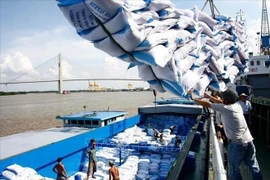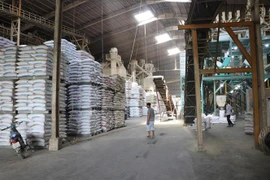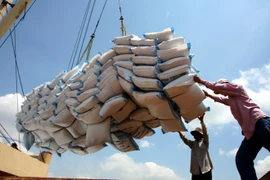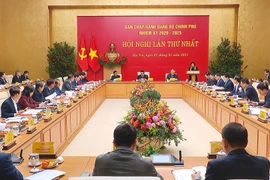Hanoi (VNA) – Although Vietnam’s rice exports have traditionally focused on Asian markets, experts have advised businesses to pay more attention to Africa which has emerged as a key potential market.
A promising market
According to the Asia-Africa Market Department under the Ministry of Industry and Trade (MoIT), Africa is an important export market for Vietnam's rice. The export of this grain to Africa rose to 692.6 million USD in 2021 from 411 million USD in 2017. Rice typically accounts for 15-20% of Vietnam’s total exports to Africa.
However, in 2022, Vietnam’s rice exports to Africa declined by 10.5% compared to 2021, reaching only 620 million USD, equivalent to 16% of Vietnam’s total exports to this continent. This drop was largely due to increased global food stockpiling amid economic and political instability, which pushed up rice prices and led some African countries to reduce the import of the food. Furthermore, the COVID-19 pandemic caused significant disruptions in global rice supply chains, with exporting countries cutting back on exports to secure domestic food supplies.
In 2023, however, Vietnam’s rice exports to Africa bounced back, reaching 1.3 million tonnes valued at 788 million USD, up 6.3% in volume and 27.7% in value compared to 2022.
Over the years, several African countries have ramped up domestic rice production in an effort to increase reserves and meet local demand. However, this remains challenging due to financial and technical issues in rice cultivation. As the population grows, along with the influx of Asian tourists and workers, demand for rice in Africa continues to rise.
For these reasons, Africa remains a market with significant potential for Vietnam’s rice exports in the coming years.
Countries like Ivory Coast, Ghana, Senegal, and Cameroon are major importers of Vietnamese rice. Ivory Coast, in particular, has continued to be a key market for Vietnamese rice in the region. Currently, Vietnamese rice is mostly exported to Africa through major international trading companies such as Louis Dreyfus, Olam, Phoenix, Platinum, Wilmar, WSGF Group, and Stallion Group.
Shifting from regular to fragrant rice
Historically, Vietnam’s export of the grain to Africa were primarily white rice, with 15% and 25% broken rice being the main types. However, in recent years, Vietnam’s market share in Africa has faced stiff competition from Thailand, India, and Pakistan, who benefit from large stocks of cheap white rice, which is more affordable for many consumers in Africa.
Alongside the demand for cheaper rice, there has been an increasing interest in fragrant rice in Africa, driven by urbanisation and rising incomes in cities. Nguyen Chi Mai, Vietnam’s Trade Counsellor in Nigeria, who also covers several other African nations, including Ghana, noted that urban consumers in Ghana prefer imported rice, especially fragrant rice, to local varieties. As a result, 80% of the country’s rice imports are consumed in urban areas. Restaurants in Ghana often use fragrant rice to attract customers. The country imports fragrant rice mainly from Vietnam, the US, and Canada.
Given this trend, African importers have increasingly sought to purchase Vietnamese fragrant rice due to its consistent quality and competitive pricing. Do Ha Nam, Vice President of the Vietnam Food Association, noted that exports of fragrant rice to Africa have grown steadily in recent years.
The Asia-Africa Market Department has identified fragrant rice as one of the fastest-growing varieties in terms of export growth to Africa. As such, increasing exports of fragrant rice presents a key strategy for boosting both the value and market share of Vietnamese rice on the continent.
Drastic measures needed
To further promote rice exports to Africa, the Ministry of Industry and Trade suggests that Vietnamese government agencies continue to refine export mechanisms and management of rice trade to accommodate market developments. It is also important to create favourable conditions for businesses to engage in rice exports and deepen their involvement in the global rice value chain.
Leveraging existing bilateral cooperation frameworks, such as joint committees and trade subcommittees between Vietnam and African countries, can help foster stronger rice trade relations, experts held. There is also potential to negotiate or extend memoranda of understanding on rice trade with countries in need of imports for stockpiling or those that have not fully liberalised their rice markets such as Uganda. Monitoring and supporting businesses involved in existing MOUs with Egypt, Comoros, Madagascar, Guinea, and Sierra Leone is also crucial, they added.
Experts also highlighted the need for improving transparency in the rice market, designing support policies in payments and logistics, promoting Vietnamese rice through trade programmes in Africa, and improving post-harvest technologies and workforce training, thus building long-term trust with African consumers and ensuring sustainable growth in this important market./.
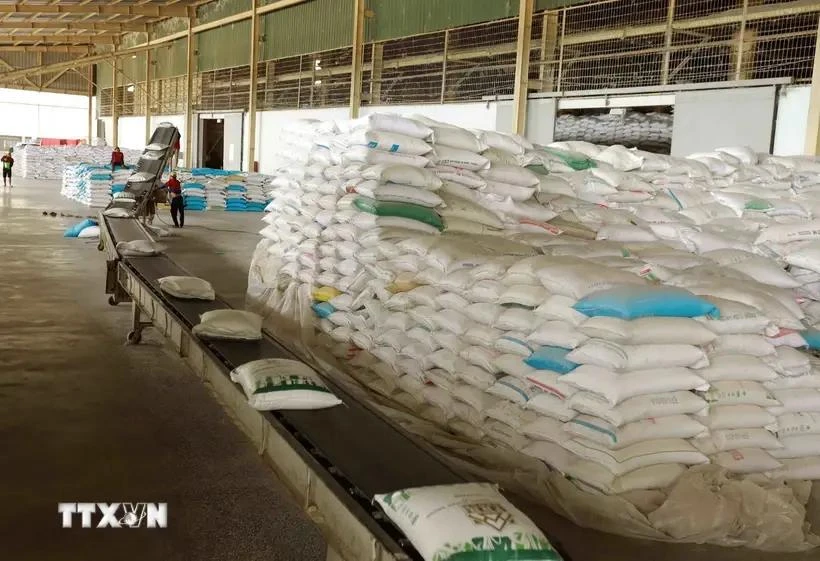
See more
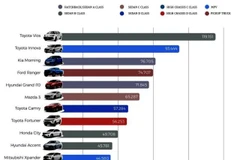
Used car market to face significant challenges in 2025: experts
The used car market in 2025 is set to experience intensified competition, according to market experts.
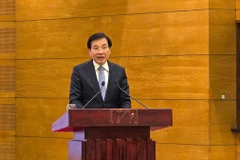
Positive economic indicators posted in early 2025: Government press conference
Vietnam's socio-economic situation continued to recover in January, with macroeconomic stability maintained, inflation put under control, and major economic balances ensured.
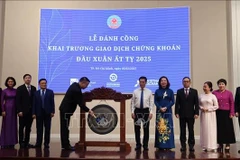
Deputy minister urges swift reform for stock market upgrade
Upgrading can no longer be delayed, Deputy Minister of Finance Nguyen Duc Chi declared, highlighting the urgency of meeting international standards to elevate Vietnam’s market classification.
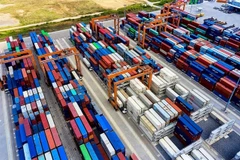
Vietnam-India trade reaches 15 billion USD in 2024
Vietnam’s exports to India amounted to 9.06 billion USD, up 7.6% year-on-year, while imports from India stood at 5.8 billion USD, down 0.6%.

Apartment prices continue to soar in 2025: MoC
The Ministry of Construction said apartment prices are likely to continue soaring in 2025, following a hike last year.
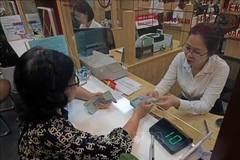
Banks stimulate credit from the beginning of 2025
Commercial banks have stimulated credit demand right from the start of the year to support economic growth.
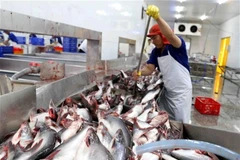
Pangasius fetch record price in early 2025
VASEP said the strong price surge in early 2025 was largely due to limited supply.
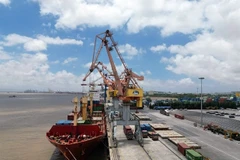
Vietnam's port firms thrive in 2024
According to the Vietnam Maritime Administration, the total cargo volume through the nation's port system reached approximately 864.4 million tonnes, up 14% year-on-year. Container throughput was estimated at 29.9 million TEUs, reflecting a 21% rise.

THACO targets sales of over 100,000 vehicles in 2025
In 2025, THACO will continue to expand the scale of investment in all six key production and business sectors including automotive, agriculture, mechanical engineering and supporting industries, investment - construction, trade – services, and logistics.
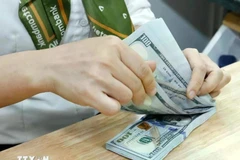
Reference exchange rate continues to rise on February 5
The State Bank of Vietnam set the daily reference exchange rate for the US dollar at 24,395 VND/USD on February 5, up 35 VND from the previous day.
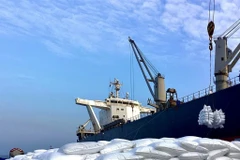
Petrovietnam Ca Mau Fertiliser JSC exports 100,000 tonnes of urea in first days of new year
Petrovietnam Ca Mau Fertiliser Joint Stock Company (PVCFC) has exported 100,000 tonnes of urea in the first days of the Year of the Snake 2025.

Tet travel boom: Flights soar at major airports
Flight volumes at major airports such as Noi Bai and Tan Son Nhat are expected to continue rising as post-Tet travel demand remains strong.
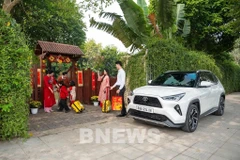
Toyota’s sales in Vietnam increase by 46% in January
Toyota's hybrid car models recorded impressive growth with 565 units, an increase of 504% compared to the figure in January 2024.
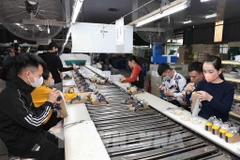
HCM City: Nearly 1 million workers back to work after Tet holiday
Nearly 1 million workers of more than 12,600 businesses with trade trade unions in Ho Chi Minh City have returned to work following the nine-day Lunar New Year (Tet) holiday, reaching 85.33% of their total workforce, according to the municipal Labour Federation.

Over 95% of businesses in Hai Phong IZs resume operations
More than 95% of enterprises at industrial zones in the northern port city of Hai Phong have resumed normal operations.
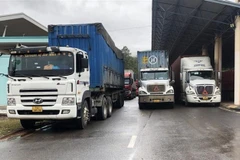
Robust trade activities at border gates signals strong economic start to 2025
Import-export activities at Lao Bao and La Lay international border gates in the central province of Quang Tri have experienced a sharp rise in the early days of the Lunar New Year, indicating a positive economic outlook for 2025.

PM urges fast-tracking construction of nuclear power plants
Prime Minister Pham Minh Chinh requested the Ninh Thuan nuclear power plants be completed by December 31, 2031 at the latest.

Vietnam earns 51.7 bln USD from exports to EU in 2024
Vietnam shipped nearly 51.7 billion USD to the European Union in 2024, marking an 18.5% increase, equivalent to an additional 8.08 billion USD compared to the previous year.
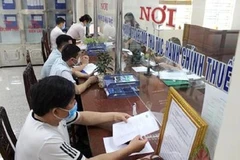
Flexible tax policy to propel Vietnam’s economic growth in 2025
In a significant move to support businesses during challenging times, the Vietnamese government has extended and enhanced various tax relief programmes for 2025, with reductions and deferral measures aimed at stimulating economic growth.

Vietnam has six billionaires in Forbes’ latest global rich list
Vietnam has six billionaires after chairman of Masan Group Nguyen Dang Quang rejoining the Forbes’ latest list of the world’s richest individuals.
